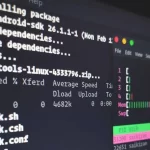[ Solved – 4 Answers] what means a dot after the file permission
what means a dot after the file permission ?
- This is a special permission in Linux which is recently included.
- Some times you will be seeing dot at the trailing end of permissions
- If you observe you will find 11th character to the initial 10 characters permission field available in Linux.
- This is new and is available in Linux when SELinux is included in the package from RHEL5+.
- When using SELinux(Security Enhanced Linux ) the files/folder permissions are set in different way.
- The dot is indicating that files/folders are set with some sort of SELinux permissions on them.
Just like a + shows files that have ACL’s on them
[ad type=”banner”]Code:
Note that 39_puppy has no dot. Code:
- The dot after file permissions in ‘ls’ long output denotes that the file in question has a SELinux security context, no matter if SELinux is enabled or not:
Code:
[ad type=”banner”]- GNU ls uses a . character to indicate a file with an SELinux security context, but no other alternate access method.
— From ls man page (info coreutils ‘ls invocation’).
- This basically implies that the file has an Access Control List (ACL) with SELinux.
- You can set or delete ACL association for a file by using the setfacl command





incredible!!